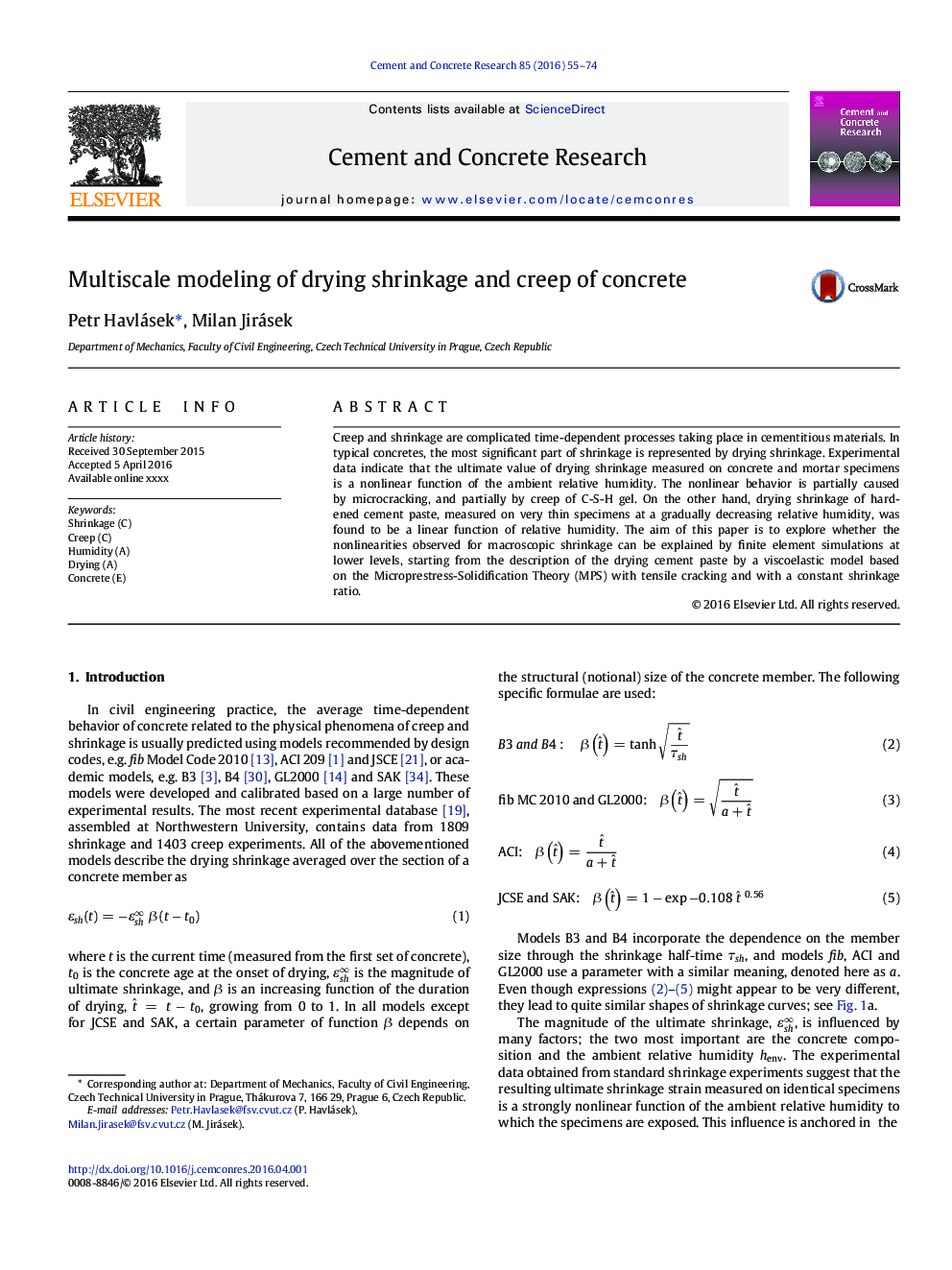| Article ID | Journal | Published Year | Pages | File Type |
|---|---|---|---|---|
| 7885085 | Cement and Concrete Research | 2016 | 20 Pages |
Abstract
Creep and shrinkage are complicated time-dependent processes taking place in cementitious materials. In typical concretes, the most significant part of shrinkage is represented by drying shrinkage. Experimental data indicate that the ultimate value of drying shrinkage measured on concrete and mortar specimens is a nonlinear function of the ambient relative humidity. The nonlinear behavior is partially caused by microcracking, and partially by creep of C-S-H gel. On the other hand, drying shrinkage of hardened cement paste, measured on very thin specimens at a gradually decreasing relative humidity, was found to be a linear function of relative humidity. The aim of this paper is to explore whether the nonlinearities observed for macroscopic shrinkage can be explained by finite element simulations at lower levels, starting from the description of the drying cement paste by a viscoelastic model based on the Microprestress-Solidification Theory (MPS) with tensile cracking and with a constant shrinkage ratio.
Related Topics
Physical Sciences and Engineering
Engineering
Industrial and Manufacturing Engineering
Authors
Petr Havlásek, Milan Jirásek,
